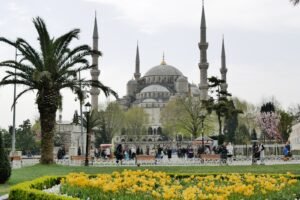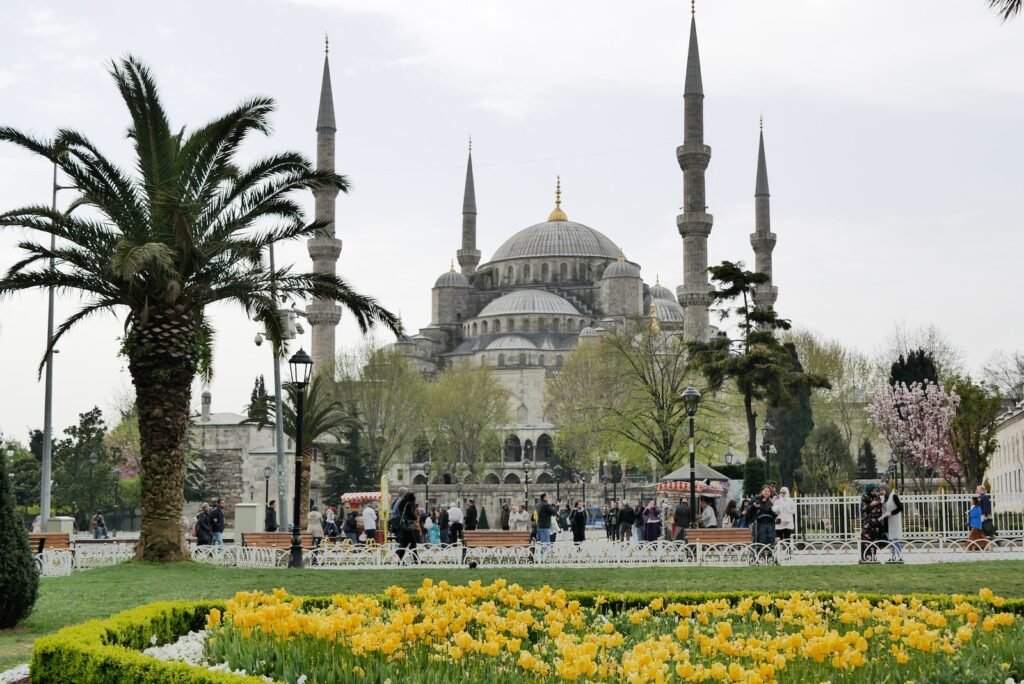Turkey’s Ancient and Diverse Past
Turkey, located at the crossroads of Europe and Asia, boasts a rich and diverse history that spans thousands of years. From its prehistoric beginnings to the rise and fall of powerful empires, Turkey has been a witness to significant historical events and has played a crucial role in shaping the world as we know it today. This comprehensive overview aims to unravel Turkey’s fascinating history and highlight the major civilizations and empires that have shaped its identity.

Prehistoric Civilizations: Anatolia’s Earliest Inhabitants
Anatolia, the land now known as modern-day Turkey, was home to some of the earliest known civilizations in human history. Archaeological findings indicate that as early as 7500 BCE, hunter-gatherer societies were present in the region. As time progressed, these early inhabitants developed more complex societies, such as the Catalhoyuk, a Neolithic settlement dating back to around 7500 BCE. Other important prehistoric civilizations in Anatolia include the Hacilar and the Hittites, who laid the foundation for future societies.
Rise of the Hittites: A Powerful Bronze Age Empire
During the Bronze Age, the Hittites emerged as a dominant force in Anatolia. The Hittite Empire, which existed from around 1600 to 1178 BCE, was renowned for its military prowess and advanced chariot warfare. They established a formidable empire that stretched across much of Anatolia and even challenged the mighty Egyptians. The Hittites left behind an impressive legacy, including their intricate cuneiform writing system and architectural marvels such as the capital city of Hattusa.
Ancient Greeks and Persians: Influence and Conflict
The ancient Greeks and Persians exerted significant influence over Anatolia during different periods. The Greeks established numerous colonies along the Aegean and Mediterranean coasts, bringing with them their language, culture, and democratic ideals. The region became a battleground between the Greeks and the Persians during the Greco-Persian Wars, with notable battles like the Battle of Marathon and the Battle of Thermopylae taking place on Anatolian soil.
Roman Rule: Anatolia under the Roman Empire
Anatolia became a crucial part of the Roman Empire in the first century BCE, after the defeat of the last Hellenistic kingdom, Pontus. The Romans saw the strategic and economic importance of the region and transformed it into a prosperous province. Cities like Ephesus and Pergamon thrived under Roman rule, boasting impressive architecture, such as the Library of Celsus and the Temple of Artemis, one of the Seven Wonders of the Ancient World.
Byzantium: The Christian Era and the Fall of Rome
With the decline of the Roman Empire, the eastern half continued as the Byzantine Empire, centered around Constantinople (modern-day Istanbul). The Byzantines embraced Christianity and made it the state religion, leaving a lasting impact on the region. The empire faced numerous challenges, including invasions by Arab armies, the Crusades, and conflicts with the Seljuks. Eventually, Constantinople fell to the Ottoman Turks in 1453, marking the end of Byzantine rule.
Seljuks and Ottomans: The Turkic Invasions
In the 11th century, the Seljuks, a Turkic nomadic group, migrated into Anatolia and established a powerful empire. They brought with them Islam and transformed the region culturally and politically. The Seljuks faced external threats, most notably from the Crusaders, but their empire laid the groundwork for the rise of the mighty Ottoman Empire. The Ottomans emerged in the late 13th century and rapidly expanded their territories, conquering Constantinople and establishing a vast empire that stretched across three continents.
Ottoman Empire: From Expansion to Decline
The Ottoman Empire became one of the most significant empires in history, lasting from the 14th century until its collapse at the end of World War I. The empire reached its zenith under Sultan Suleiman the Magnificent, expanding its domains to encompass much of Southeast Europe, the Middle East, and North Africa. However, internal conflicts, economic stagnation, and increasing pressures from European powers led to the empire’s decline. The empire finally dissolved after World War I, paving the way for the establishment of the modern Turkish Republic.
The Tanzimat Era: Modernization and Western Influence
The 19th century witnessed a period of significant reforms known as the Tanzimat era. The Ottoman Empire, under pressure from European powers, initiated a series of reforms aimed at modernizing the state and adopting Western political, legal, and educational systems. These changes brought about social and cultural transformations, but also sparked nationalist movements among different ethnic and religious groups within the empire.
Turkish Republic: Atatürk’s Vision and Reforms
Following the collapse of the Ottoman Empire, Mustafa Kemal Atatürk founded the modern Turkish Republic in 1923. Atatürk introduced a series of sweeping reforms to modernize and Westernize the country, including the adoption of the Latin alphabet, secularization of the state, and granting women the right to vote. These reforms aimed to create a modern, democratic, and secular nation-state, and they continue to shape Turkey’s identity to this day.
Contemporary Turkey: Politics, Culture, and Economy
Today, Turkey is a vibrant and dynamic country that bridges the East and the West. It boasts a unique blend of cultural influences, traditions, and a thriving economy. However, Turkey also faces challenges such as political polarization, freedom of expression, and regional conflicts. It strives to balance its rich historical heritage with the demands of a modern, globalized society.
Preserving the Past: Historical Sites and Museums
Turkey is home to numerous historical sites and museums that showcase its rich history. From the iconic Hagia Sophia in Istanbul to the ancient city of Troy, these sites provide invaluable insights into Turkey’s past. Museums like the Museum of Anatolian Civilizations in Ankara and the Ephesus Archaeological Museum house artifacts that shed light on the civilizations that once flourished in the region. Preserving and promoting these historical treasures is crucial in preserving Turkey’s cultural heritage and allowing future generations to connect with their roots.
Turkey’s rich history is a testament to the importance of the region in shaping the world we live in today. From its earliest prehistoric civilizations to the rise and fall of mighty empires, Turkey has experienced a diverse range of influences that have left an indelible mark on its culture, architecture, and society. By exploring and understanding Turkey’s past, we gain a deeper appreciation for the complexities and interconnections of our shared human history.

